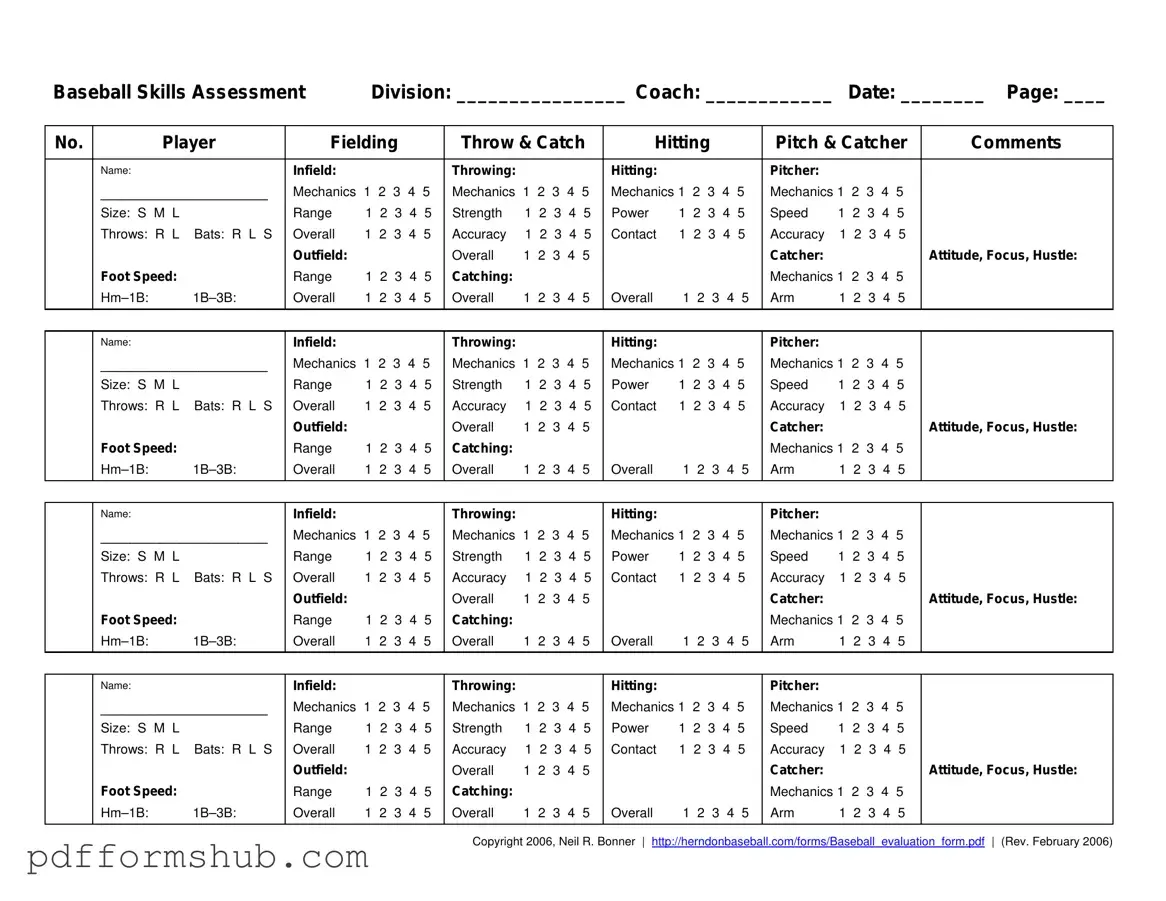Fill in Your Baseball Assessment Form
The Baseball Assessment Form is a tool used by coaches to evaluate players' skills in various aspects of the game. This form helps assess abilities such as fielding, throwing, hitting, and pitching, providing a structured way to score and comment on each player's performance. Coaches can use the results to make informed decisions during team selection, ensuring a fair and thorough evaluation process.
Ready to evaluate your players? Fill out the form by clicking the button below.
Customize Form
